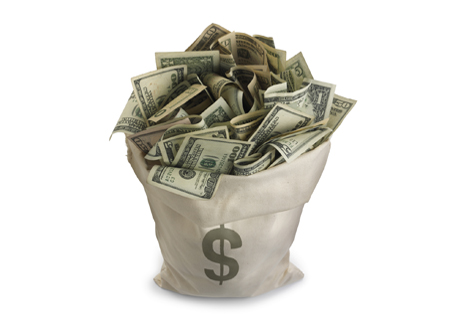Is this what it means to be in recovery? Are we in the throes of a
major paradigm shift that will affect the way we spend for the next
decade? Or are we slyly awaiting a return to a perceived norm and, in
essence, the “ok” to return to our bad behaviors?
This year
would have the makings of a fascinating study in consumer behavior if
we weren’t all playing a starring role in these more realistic times.
Only a few years ago, we aspired to living well beyond our means and
not really caring so much how our behavior affected our own lives, let
alone the country’s outlook.
NEW WORLD ORDER
It
didn’t take long, however, to wake up to the new world order. Living
with dour statistics sobers a nation quickly: foreclosures,
unemployment rates, lack of consumer confidence and credit card debt
included. In comparison, what was defined as the luxury market had been
somewhat insulated through 2008. But 2009 and beyond has been a
different story, one of redefining how we view this targeted population.
Opportunity
does exist with the true luxury consumer. It’s simply a matter of
recognizing that the pool of luxury consumers has diminished—or, some
might argue, was overinflated from the beginning. Generally, statistics
suggest that 20 percent of U.S. households have incomes of at least
$100,000. According to a January 2010 Forbes.com blog post, there are
currently 225,000 Americans worth more than $10 million. If they
represent the true luxury consumer, then we are looking at
approximately 0.01 percent of the population.
A different
mindset exists for each. First, the Earnest Affluents—or that 0.01
percent of the population—appreciate true luxury and can afford it,
albeit more discriminately these days. For them, excess is out and
stealthy spending is in. Carrying a brand-emblazoned shopping bag is no
longer the epitome of status. Quality is. Yes, they will continue to
spend money, but decisions are made with more consideration and they
look to marketers and manufacturers to answer the question, “Why should
I spend?”
The second group, the Offluents, are made up of that
20 percent of the population who exhausted themselves by trying to keep
up with the authentic luxury lifestyle. Their new mindset involves the
internal need-versus-desire debate. If the answer to the question, “Do
I need it?” is “no,” likely the item will return to its shelf or remain
on a wish list. As a result, frugality is in. Instead of consumers
feeling self-conscious about their new shopping habits, bargaining,
coupon clipping and consignment shopping have become bragging points.
In addition, the values of the Greatest Generation, or those born prior
to 1946, are now prized: discipline when it comes to finances and
saving for retirement.
TALK THE TALK
The word “luxury” has been used to define many things. As we know, it’s been overextended. What’s in and out for brand-speak?
Out In
Luxury Authenticity
Decadent Discretion
Exquisite Quality
Lavish Sensitive
Extravagance Dependable
Glamour Exclusive
Flash Subtle
True
luxury brands have remained above the fray, as their brand messaging
and company legacy still hold appeal for the wealthiest percentage of
the population. Those who have embraced the new vocabulary also find
themselves in a good position as tenets like authenticity, quality and
dependability are valued. In the future, luxury goods will be marketed
to the Earnest Affluents exclusively, or those who can afford the
investment.
SMALL, SMART & HANDSOME
Even
design trends have followed suit, with smaller, smarter and handsome
homes becoming more enticing for both the Earnest Affluents, as well as
the Offluents. While less is needed to fill these more petite homes,
the quality of goods has not been lowered. These well-appointed spaces
equal singularly chic environments—meaning money saved on energy, for
example, may be redistributed elsewhere in the home. Form, function and
detail are paramount, along with thoughtful customization to utilize
every inch smartly.
Finally, we ask ourselves if we did indeed
learn our lesson. Industry experts encourage authentic luxury brands to
step up and embrace what has made them special: substance over style
and quality over consumption. The angst in consumers’ desire to find
balance continues, however, as a new attitude toward the elusive
business of being happy evolves. As a nation, we sometimes embrace
change slowly, which is why some question whether our frugality is a
short-term fix or a long-term attitude.
— Jennifer Brough is a trend tracker at White Good & Co.









